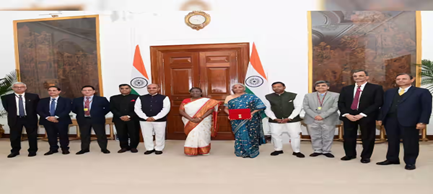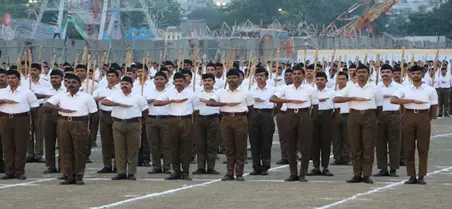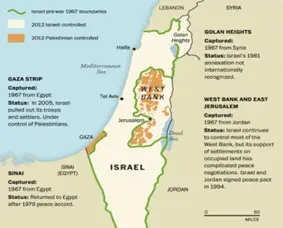Saturday, 27th July 2024
India's Illegal Coal Mining Problem
Why in the news?
- On July 13, three workers died of asphyxiation in an illegal coal mine near Bhet village in Gujarat’s Surendranagar district.
- An FIR revealed that the accused did not provide essential safety equipment, leading to the workers inhaling toxic gas.
- The police have charged four individuals with culpable homicide not amounting to murder.
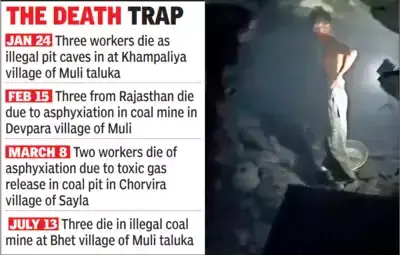
|
Recent Incidents:
|
India’s Coal Reserves:
- India holds the fifth-largest coal reserves in the world.
- The commercial coal-mining industry has been in operation since 1774, launched by the East India Company along the Damodar River in West Bengal.
- 70 percent of India’s coal supply comes from the states of Jharkhand, Chhattisgarh, Odisha, West Bengal, and Madhya Pradesh.
- State-owned Coal India Limited has a virtual monopoly on coal mines in India, producing roughly 75 percent of the coal burned in India’s coal-fired power stations.
Why is Illegal Coal Mining Rampant in India?
- High Demand for Coal: Coal is essential for 55% of India’s energy needs. The legal supply often falls short of demand, leading to an illegal supply chain.
- Economic Necessity: Coal-rich areas often coincide with regions facing poverty and unemployment. Illegal mining provides an income source for local populations.
- Weak Regulation and Enforcement: Remote mining areas suffer from inadequate monitoring and resource allocation. Poor enforcement leads to the rise of "coal mafias" controlling illegal mining activities.
- Political Complicity: Allegations of political support for illegal mining are common. Political figures have been accused of backing illegal operations, making eradication difficult.
- Rudimentary Mining Techniques: Illegal operations use basic methods like surface and rat-hole mining. Minimal operational costs turn into significant profits, attracting more illegal miners.
- Safety and Health Hazards: Lack of safety equipment and protocols leads to frequent worker fatalities. Poor structural support in illegal mines increases the risk of cave-ins and toxic exposure.
Challenges in Reducing Illegal Coal Mining:
- Jurisdictional Issues: Law enforcement is a state responsibility, leading to blame-shifting between state and central governments.
- Economic Dependencies: Local economies in coal-rich areas depend heavily on mining activities. When legal mines close, illegal mining often continues to support the community.
- Complex Legal Framework: The intricate legal system governing mining can lead to bureaucratic inefficiencies. This complexity makes it easier for illegal mining to persist.
Laws Relating to Mining in India:
- State Government Ownership
- Constitutional Provision: According to the entry at serial No. 23 of List II (State List) of the Constitution of India, the state government is mandated to own the minerals located within their boundaries.
- Central Government Ownership
- Constitutional Provision: According to the entry at serial No. 54 of List I (Central List) of the Constitution of India, the central government is mandated to own the minerals within the exclusive economic zone of India (EEZ).
- Legislative Framework
- MMDR Act of 1957: In pursuance of these constitutional mandates, the Mines & Minerals (Development and Regulation) (MMDR) Act of 1957 was framed to regulate the development and regulation of mines and minerals in India.
- Amendments: The Act was further amended in 2016 and 2020 to address specific emergent issues and was last amended in 2021.
- MMDR Act of 1957: In pursuance of these constitutional mandates, the Mines & Minerals (Development and Regulation) (MMDR) Act of 1957 was framed to regulate the development and regulation of mines and minerals in India.
- National Mineral Policy 2019
- Objective: The National Mineral Policy 2019 aims to promote extensive exploration, including deep-sea resources, to improve the mining industry’s contribution to GDP.
- Pradhan Mantri Khanij Kshetra Kalyan Yojana (PMKKKY):
- Welfare Scheme: It is a welfare scheme for mining-affected areas, and the Sagarmala project, which aims to develop port infrastructure to support the growth of the mining sector.
- New Programme: It provides for the welfare of areas and people affected by mining-related operations, using the funds generated by District Mineral Foundations (DMFs).
- Welfare Scheme: It is a welfare scheme for mining-affected areas, and the Sagarmala project, which aims to develop port infrastructure to support the growth of the mining sector.
|
Economic Survey 2023-24: Data Related to Coal and Mining: Coal: The Backbone of India’s Energy System:
Gasification Technology:
|
Conclusion:
Illegal coal mining in India is a multifaceted issue driven by high demand, economic necessity, weak enforcement, political support, and safety negligence. The challenge is exacerbated by jurisdictional and legal complexities, making it a persistent problem despite regulatory efforts. Addressing these root causes is essential for effectively combating illegal coal mining in the country.
|
UPSC Civil Services Examination Previous Year Question (PYQ) Mains Q:1 Despite India being one of the countries of Gondwanaland, its mining industry contributes much less to its Gross Domestic Product (GDP) in percentage. Discuss. (2021) Q:2 “In spite of adverse environmental impact, coal mining is still inevitable for development”. Discuss. (2017) |
Source: TH
Govt to form Inter-Ministerial Core Group on Employment
Why in the news?
- The union Labour minister recently chaired an inter-ministerial roundtable meeting focused on developing a central employment database to unify various employment data sources, aiming for a comprehensive view of employment generation in India.
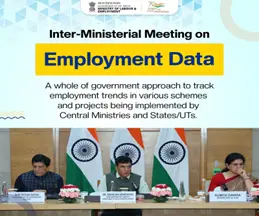
Employment in India:
- Current Employment Trends:
- Informal Sector Dominance: Over 80% of the workforce is employed informally, including in agriculture, construction, and small-scale industries. This sector often lacks job security and consistent income.
- Rural Employment: Approximately 65% of the population depends on agriculture.
- Growth of Services Industry: Significant growth in services (IT, finance, retail) has created jobs in urban areas and improved India’s global economic standing.
- Challenges:
- Unemployment and Underemployment: Persistent unemployment, especially among the youth and educated, and underemployment where skills are underutilised.
- Skill Gap: Discrepancy between workforce skills and employer demands.
- Job Quality: Poor working conditions, low wages, and lack of social security in many informal sector jobs.
Key Government Initiatives:
- Skill India Mission: Aims to train over 400 million people by 2022 to bridge the skill gap.
- Pradhan Mantri Mudra Yojana: Provides loans up to Rs. 10 lakhs to small/micro-enterprises.
- Make in India: Encourages manufacturing, creating jobs in related sectors.
- MGNREGA: Ensures at least 100 days of wage employment in rural areas.
Suggestions / Way Ahead:
- Economic Diversification: Expanding into emerging industries like renewable energy and digital services.
- Educational Reforms: Aligning curriculum with market demands and promoting vocational training.
- Technological Integration: Embracing technology to boost productivity and create new job opportunities.
Latest Employment Data:
- From 2017-18 to 2021-22, India generated over 8 crore (80 million) jobs, averaging over 2 crore (20 million) jobs annually, despite the COVID-19 pandemic impact.
Govt to Form Inter-Ministerial Core Group on Employment:
- Objective: Create a central employment database to integrate data from various sources for a comprehensive view.
- Participants: The meeting included 19 union ministries and industry associations.
- Focus: Establish systematic data recording on employment from government schemes, programs, and projects.
- Minister’s Emphasis: Need for a core group to integrate efforts across ministries and departments and addressing the industry's demand for a skilled workforce.
- Industry Collaboration: Urged industry bodies to offer internships to better prepare young people with necessary skills and qualifications.
Source: PIB
World’s Forests 2024 Report
Why in the news?
- Recently, State of the World’s Forests 2024, released by the Food and Agriculture Organization (FAO) recently, has brought both relief and concern regarding the state of the world’s forests.

Report Overview:
- Published by: Food and Agriculture Organization (FAO) of the United Nations
- Release Date: July 22, 2024
- Purpose: Provides a comprehensive analysis of forest conditions and trends worldwide.
Key Findings:
- Deforestation Trends:
- Global Efforts: There has been a noticeable decline in deforestation rates compared to previous decades, indicating effective global efforts to curb deforestation.
- Statistics: From 1990 to 2020, approximately 420 million hectares (ha) of forest were converted to other land uses.
- Annual Rates: Deforestation rates fell from 15.8 million ha per year (1990-2002) to 10.2 million ha per year (2015-2020).
- Regional Data: Africa saw 4.41 million ha of deforestation, South America 2.95 million ha, and Asia 2.24 million ha.
- Forest Coverage:
- Global Coverage: In 2020, the global forest covered approximately 4.1 billion hectares (31% of the land area).
- Major Contributors: Russia, Brazil, Canada, the USA, and China account for 54% of the global forest area.
- Additional Contributors: Australia, the Democratic Republic of Congo, Indonesia, Peru, and India contribute about two-thirds of the global forest area.
- Forest Area Gains:
- Countries with Gains: In 2020, ten countries recorded annual gains in forest area, including China, Australia, India, Chile, Vietnam, Turkey, USA, France, Italy, and Romania.
- India’s Gains: India gained 266,000 hectares of forest annually from 2010-2020, ranking third globally in forest area gains.
- Mangrove Forests:
- Global Area: The global mangrove area was recorded to be 14.8 million ha.
- Regional Contributions: South and Southeast Asia contributed almost 44% of the total global mangrove area.
- Trends: The rate of gross global mangrove loss decreased by 23% between 2000-2010 and 2010-2020, though the rate of gain in mangrove areas also slightly decreased.
- Impact of Fires:
- Fire Impact: Approximately 340-370 million ha of the earth’s land area is impacted by annual fires.
- Emissions: In 2023, fires emitted 6,687 megatons of carbon dioxide globally, more than double the emissions contributed by the European Union by burning fossil fuels.
- Challenges from Pests:
- Pests Impact: Forests face significant threats from pests, such as the pine wood nematode in China, Japan, and the Republic of Korea, causing substantial damage to native pine forests.
- Economic Cost: Monitoring and quantifying the economic cost of forest degradation, including timber loss, cost of tree replacement, and ecosystem services, is challenging.
Conclusion
The State of the World’s Forests 2024 report reveals a complex picture of the current state of global forests. Effective monitoring, international cooperation, and sustainable management practices are crucial to address these challenges and ensure the health and resilience of the world’s forests
Source: DTE
Kargil Vijay Diwas
Why in the news?
- Recently, Kargil Vijay Diwas, celebrated on July 26, honours Indian soldiers' bravery and sacrifice during the Kargil War of 1999, marking the conflict's conclusion between India and Pakistan.
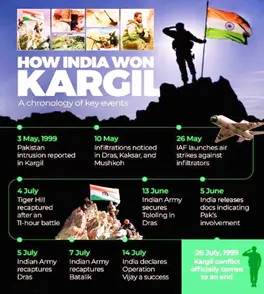
What is Kargil Vijay Diwas?
- About:
- Kargil Vijay Diwas, or Kargil Victory Day, is celebrated annually on July 26 in India.
- The day commemorates India's victory in the 1999 Kargil War against Pakistan and honours the bravery and sacrifices of Indian soldiers.
Background:
- Conflict History:
- India and Pakistan have a history of conflicts, including the 1971 conflict leading to Bangladesh's creation.
- Post-1971, tensions continued, particularly over the Siachen Glacier.
- Nuclear Escalation:
- Both countries conducted nuclear tests in 1998, escalating tensions.
- The Lahore Declaration in February 1999 aimed to resolve the Kashmir conflict peacefully.
- Infiltration and War:
- During the winter of 1998-1999, Pakistani forces covertly infiltrated across the Line of Control (LoC) to seize positions in Kargil, Ladakh.
- Indian troops initially mistook these infiltrators for terrorists but soon recognized it as a military operation.
- The conflict, fought in the summer of 1999, extended over 170 km from Mashkoh Valley to Turtuk in the Kargil sector.
- In response, India launched Operation Vijay, deploying over 200,000 troops to the region to counter the incursion.
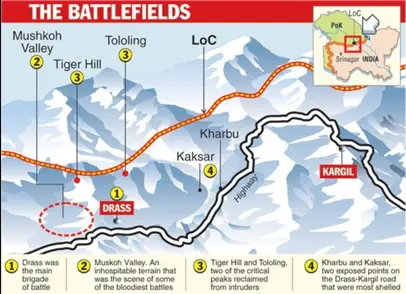
Significance of Kargil Vijay Diwas:
- Observance: Since 1999, July 26 has been observed as Kargil Vijay Diwas to honour Indian soldiers' supreme sacrifices during the war.
- War Memorials:
- The Kargil War memorial in Dras, built in 2000 and renovated in 2014, commemorates Operation Vijay.
- The National War Memorial, inaugurated in 2019, honours soldiers who died in various conflicts, including Sino-Indian war in 1962, Indo-Pak wars in 1947, 1965, and 1971, Indian Peace Keeping Force Operations in Sri Lanka 1987-90, and the Kargil Conflict in 1999.
Impact of the Kargil War:
- Global Recognition: The LoC was recognized internationally as the de facto border between India and Pakistan, reinforcing India's stance on Jammu and Kashmir's territorial integrity.
- Strategic Partnerships: The war marked a turning point in Indo-US relations, with India being recognized as a responsible nuclear actor, leading to the Indo-US Nuclear Deal.
- Diplomatic Gains: The conflict put significant diplomatic pressure on Pakistan, culminating in international condemnation and isolation.
- Nuclear Diplomacy: The war highlighted the risks of nuclear escalation in South Asia, drawing global attention to the region's volatility.
- Global Perception: The war enhanced India's global stature as a rising power with robust defence capabilities.
Operations Associated with the Kargil War:
- Operation Vijay: This operation was India's military response to the Pakistani incursion, aimed at clearing infiltrators from the Indian side of the LoC and restoring the status quo.
- Operation Safed Sagar: Conducted by the Indian Air Force, it supported ground operations using aircraft like MiG-21s, MiG-23s, MiG-27s, Mirage 2000, and Jaguars.
- Operation Talwar: The Indian Navy’s operation ensured maritime security and deterrence, signalling potential responses to further aggression.
Reforms Undertaken After the Kargil War:
- Security Sector Reforms: The Kargil Review Committee (KRC), led by K Subrahmanyam, reviewed India's National Security Structure, leading to reforms in intelligence, border, and defence management.
- Creation of Chief of Defence Staff (CDS): The CDS was established to promote integration among the Army, Navy, and Air Force, serving as a single-point military advisor to the government.
- Establishment of Tri-Service Commands: The Andaman and Nicobar Command was created as a model for future theatre commands, integrating resources from all three services.
- Intelligence Reforms: The National Technical Research Organisation (NTRO) and Defence Intelligence Agency (DIA) were established to enhance technical and strategic intelligence capabilities.
- Border Management Enhancements: Improved surveillance and patrolling, including the use of thermal imaging cameras, motion sensors, and radar systems.
- Operational Reforms: Modernization of weapon systems, artillery, and communication equipment; increased focus on high-altitude warfare training.
- Improved Coordination and Communication: Enhanced joint exercises and real-time intelligence sharing among military branches.
- Counter-Terrorism Measures: Strengthened counter-terrorism capabilities with the Intelligence Bureau as the principal agency.
- Indigenous Satellite Navigation System: Development of the Indian Regional Navigation Satellite System (IRNSS) in response to the denial of US satellite navigation systems during the conflict.
- Doctrinal Changes: The evolution of military doctrines, including the Cold Start Doctrine, addressing multidimensional proxy wars and shaping future military strategies.
Conclusion:
The Kargil War of 1999 was a pivotal event for India, impacting its military strategy and national security policies. It reinforced the LoC as an effective border and accelerated the development of new military doctrines. The war's legacy continues to influence India's defence strategies and diplomatic relations.
|
UPSC Civil Services Examination, Previous Year Question (PYQ) Mains Q:1 “Increasing cross-border terrorist attacks in India and growing interference in the internal affairs of several member-states by Pakistan are not conducive for the future of SAARC (South Asian Association for Regional Cooperation).” Explain with suitable examples. (2016) Q:2 The terms ‘Hot Pursuit’ and ‘Surgical Strikes’ are often used in connection with armed action against terrorist attacks. Discuss the strategic impact of such actions. (2016) Q:3 Terrorist activities and mutual distrust have clouded India-Pakistan relations. To what extent the use of soft power like sports and cultural exchange could help generate goodwill between the two countries. Discuss with suitable examples. (2015) |
Promoting Affordable Cancer Treatment in India
Why in the news?
- Recently, In the Budget 2024-25 speech, the finance minister announced customs duty exemptions on three targeted cancer drugs—trastuzumab deruxtecan, Osimertinib, and durvalumab.
- This move is expected to make these drugs more accessible and reduce the overall cost of cancer therapies in India.

Cancer Profile in India:
- Nature of Cancer: Cancer involves uncontrolled cell growth, leading to tumours that may be cancerous or non-cancerous.
- Current Statistics: In 2022, India recorded 14.6 lakh new cancer cases and 8.08 lakh cancer deaths.
- Incidence Rates: 1 in 9 Indians is expected to develop cancer in their lifetime. Cancer incidence is higher among women (103.6 per 100,000) compared to men (94.1 per 100,000). Common cancers include lung, mouth, prostate, and stomach cancers in men, breast, cervix, ovary, uterus, and lung cancers in women.
Targeted Cancer Therapies
- Overview: Targeted cancer drugs focus on attacking cancer cells specifically, resulting in fewer side effects compared to traditional chemotherapy. Immunotherapy, another type, trains the immune system to target cancer cells.
- Types:
- Targeted Drugs: Target specific genetic changes in cancer cells.
- Immunotherapy: Enhances the body's immune response against cancer cells.
About the 3 Customs Duty Exempted Targeted Cancer Drugs:
- Trastuzumab Deruxtecan:
- Brand Name: Enhertu
- Developed By: Daiichi Sankyo and marketed by AstraZeneca
- Usage: Second-line treatment for breast cancers, now approved for any HER-2 receptor-positive cancer
- Cost: ~Rs 1.6 lakh per vial
- Osimertinib:
- Brand Name: Tagrisso
- Developed By: AstraZeneca
- Usage: Treatment for lung cancers
- Cost: ~Rs 5 lakh per strip of ten pills
- Durvalumab:
- Brand Name: Imfinzi
- Usage: Immunotherapy for lung, biliary tract, bladder, and liver cancers
- Cost: ~Rs 1.5 lakh per 10ml vial
Regulation of Prices of These Cancer Drugs in India:
- Trastuzumab Injection:
- Status: Scheduled drug
- Regulation: Under the National List of Essential Medicines (NLEM) 2022
- Price Ceiling: Rs. 54,725 per vial, fixed by the National Pharmaceutical Pricing Authority (NPPA)
- Osimertinib and Durvalumab:
- Status: Non-scheduled drugs
- Regulation: Under the Drug Prices Control Order (DPCO) 2013
- Price Monitoring: NPPA ensures that the Maximum Retail Price (MRP) does not increase by more than 10% over the preceding 12 months
Impact of Customs Duty Exemptions
- Cancer Incidence in India:
- Lung Cancer: 1 in 68 men
- Breast Cancer: 1 in 29 women
- Patient Need: Approximately one lakh patients could benefit from trastuzumab deruxtecan, osimertinib, and durvalumab for lung and breast cancer treatments
- Expected Outcome:
- Financial Relief: The customs duty exemptions are anticipated to significantly reduce the cost of these drugs, easing the financial burden on cancer patients and their families.
Source: PIB
MERCOSUR
Why in the news?
- Recently, Bolivia became a full member of MERCOSUR to boost trade with member countries.

About MERCOSUR:
- Overview: MERCOSUR (Southern Common Market) is an economic and political bloc in Latin America.
- Members: Originally, it consisted of Argentina, Brazil, Paraguay, and Uruguay. Bolivia and Venezuela joined later, although Venezuela has been suspended since December 1, 2016.
- Creation: Established in 1991 through the Treaty of Asuncion, aimed at ensuring the “free movement of goods, services, and factors of production between countries.”
- Objectives: The bloc seeks to enhance economic integration, free trade, and the movement of goods, services, and people among its members.
- Governance: The Common Market Council is the highest decision-making body, serving as a high-level forum for coordinating foreign and economic policy.
- Languages: Spanish and Portuguese are the official working languages.
- India's Engagement: India and MERCOSUR signed the Preferential Trade Agreement (PTA) in 2004, strengthening economic relations with one of the world’s largest trade blocs.
- Headquarters: Montevideo, Uruguay.
Source: FE
Listeriosis
Why in the news?
- Two recent outbreaks of listeria, a bacterium that can contaminate food, have been reported in the United States and Canada.
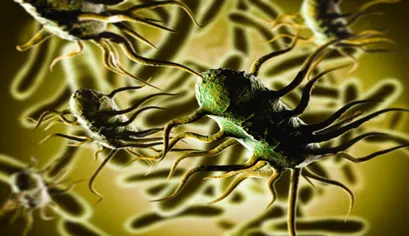
About Listeriosis:
- Causative Agent: Listeriosis is caused by the bacteria Listeria monocytogenes, which is found in soil, vegetation, water, sewage, and the faeces of animals and humans.
- Sources of Contamination: Foods more likely to be contaminated with listeria include milk, raw sprouts, deli meats, hot dogs, soft cheeses, and smoked seafood.
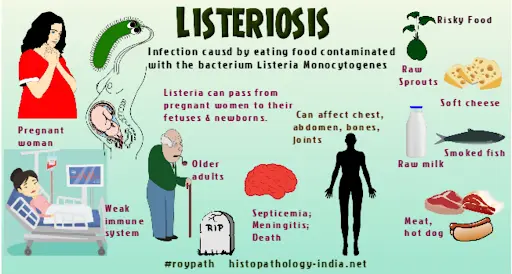
Symptoms:
- Most individuals who consume listeria-contaminated food do not exhibit symptoms.
- The bacteria can persist in the system for up to two months before symptoms appear, complicating the identification of the source of infection.
- Symptoms include vomiting, nausea, cramps, severe headache, constipation, and fever.
- High-risk groups such as immunocompromised individuals, pregnant women, newborns, and the elderly are particularly vulnerable.
Vulnerable Populations:
- Individuals with compromised immune systems, pregnant women and their offspring, and the elderly (65 and above) are at higher risk.
- In the US outbreak, the median age of affected individuals is 75. Listeria can lead to hospitalisation and even death for the immunocompromised and elderly.
- Pregnant women are 10 times more likely to contract a listeria infection, which can result in pregnancy loss, premature birth, or severe infection in the newborn.
Treatment:
- Treatment depends on the severity of the infection. It is generally similar to treatment for routine stomach infections and may involve antibiotics.
Source: IE
Exercise KHAAN QUEST
Why in the news?
- The Indian Army contingent has departed for Exercise KHAAN QUEST, scheduled to take place from July 27 to August 9, 2024, in Ulaanbaatar, Mongolia.
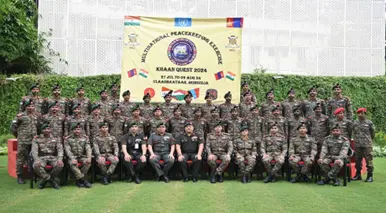
About Exercise KHAAN QUEST:
- Nature: This is a multinational military exercise designed to bring together military forces from various countries to enhance their peacekeeping capabilities.
- Previous Edition: The last Exercise KHAAN QUEST was held in Mongolia from June 19 to July 2, 2023.
Key Highlights:
- Background:
- Initiation: The exercise began as a bilateral event between the USA and Mongolian Armed Forces in 2003.
- Evolution: Since 2006, it has evolved into a Multinational Peacekeeping Exercise, with the current iteration being the 21st.
- Indian Contingent:
- Composition: The contingent consists of 40 personnel, primarily from a Battalion of the Madras Regiment, with additional members from other Arms and Services. It includes one Woman Officer and two Women Soldiers.
- Objective:
- Purpose: The exercise aims to prepare the Indian Armed Forces for peacekeeping missions in a multinational setting, enhancing interoperability and military readiness for peace support operations under Chapter VII of the United Nations Charter.
- Tactical Drills:
- Practices: The exercise will involve tactical drills such as the establishment of Static and Mobile Check Points and Cordon and Search Operations.
- Overall Goal:
- Outcomes: Exercise KHAAN QUEST will promote interoperability, camaraderie, and collaboration among the participating countries' soldiers.
Source: PIB
Ketamine Pill
Why in the news?
- Recent reports suggest that slow-release ketamine tablets may offer an effective treatment for depression with fewer side effects.

About Ketamine Pill:
- Description: Ketamine, also known as Ketalar, is a medication commonly used to provide anaesthesia and pain relief during surgeries.
- Mechanism: It is sometimes referred to as a “party drug” due to its hallucinogenic effects. Ketamine blocks NMDA receptors, which are involved in the excitatory neurotransmitter glutamate. This action alters neural communication by increasing glutamate levels and disrupting pain transmission in the spinal cord.
- Origin: Derived from the hallucinogenic drug Phencyclidine (PCP), ketamine acts as a dissociative anaesthetic with psychedelic properties. It is used under strict medical supervision for anaesthesia and treatment-resistant depression.
Uses:
- Applications: Ketamine therapy is employed to address various conditions, including depression, anxiety, PTSD, end-of-life distress, chronic pain, and substance abuse issues.
Potential Side Effects:
- Risks: Possible side effects include depression, cognitive impairments, unconsciousness, and memory loss.
Regulation in India:
- Status: In India, ketamine is classified as a Schedule X drug, meaning it is subject to strict controls and monitored closely by prescribing doctors on a case-specific basis.
Source: TH
The Geo-Calculus of the Moscow Visit
Why in the News?
- Two weeks after PM Modi's visit to Russia, the U.S. and Europe continue to respond to the close rapport between Modi and President Putin.
- The visit, occurring during the Ukraine conflict, faced criticism from Ukrainian President Zelenskyy and disappointment from U.S. officials.
- India has emphasised its right to choose its foreign policy while assuring that its core worldview remains unchanged.
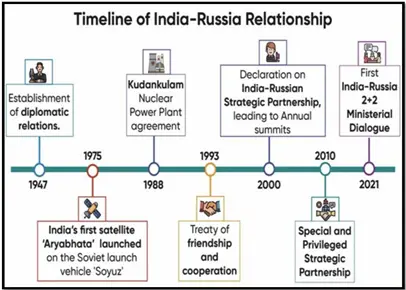
Context:
- Prime Minister’s Visit:
- Significance: Modi’s visit to Russia, his first in his third term, has generated notable reactions from the U.S. and Europe.
- International Reactions: The evident camaraderie between Modi and Russian President Vladimir Putin has faced criticism from Ukrainian President Volodymyr Zelenskyy and various U.S. officials.
- Global Reactions:
- U.S. Concerns: The U.S. State Department, National Security Adviser, and U.S. Ambassador to India have expressed disappointment over the visit, reflecting concerns about its geopolitical implications.
- India’s Stance:
- Freedom of Choice: Despite global reactions, New Delhi has emphasised its “freedom of choice” in foreign policy, asserting that India’s worldview remains unchanged.
- Geopolitical Messaging: The visit has conveyed significant geopolitical messages and highlighted India's nuanced diplomatic balancing act.
- Diplomatic Dynamics:
- Timing and Context: The visit’s timing amid ongoing global tensions underscores India's delicate diplomatic balancing on the world stage.
- Strategic Implications: The visit suggests potential shifts in India’s foreign policy approach, emphasising the need to understand both the explicit outcomes and the broader strategic context.
Evolution of Indo-Russia Relations:
- Historical Background:
- Cold War Era Alliance: India and the Soviet Union had a strong strategic, military, economic, and diplomatic relationship during the Cold War.
- Post-Soviet Continuity: Russia continued the robust ties with India after the Soviet Union's dissolution, maintaining a Special Strategic Relationship.
- Political Relations:
- Annual Commissions: The IRIGC-TEC and IRIGC-MTC commissions meet annually to discuss trade, economic, scientific, technological, cultural, and military-technical cooperation.
- Bilateral Trade:
- Trade Figures: India’s bilateral trade with Russia reached around USD 13 billion in 2021-22, up from USD 8.14 billion in 2020-21.
- Trading Partner Rank: Russia has become India’s seventh-largest trading partner, rising from the 25th position in 2021.
- Defence and Security Relations:
- Joint Military Exercises: India and Russia regularly conduct the Tri-Services exercise ‘INDRA’ and collaborate on military programs like BrahMos missiles and Sukhoi Su-30MKI aircraft.
- Military Hardware: India has acquired significant military hardware from Russia, including the S-400 Triumf, Kamov Ka-226 helicopters, and INS Vikramaditya aircraft carrier.
- Science and Technology:
- Historical Collaboration: Soviet assistance was crucial in establishing Indian institutions such as IIT Bombay and the early Indian space program.
- Current Projects: Ongoing collaboration includes basic sciences, Gaganyaan manned spaceflight program, nanotechnologies, and quantum computing.
Assessment of the Conflict in Ukraine:
- Timing of the Visit:
- Visit’s Timing: Modi’s visit to Russia, two years after the Ukraine war began, reflects an evolving assessment of the conflict’s progression.
- Initial Response:
- Public Messaging: Modi initially avoided the 2022 and 2023 India-Russia summits, focusing on his statement at the SCO summit in Uzbekistan about "this era is not of war."
- Conflict Evolution:
- Current Situation: The visit must be seen in the context of the Ukraine conflict’s evolution, with Russia maintaining control over eastern Ukraine despite earlier setbacks.
- Frozen Conflict:
- Peace Process: With Western nations pushing for peace, New Delhi appears to anticipate a frozen conflict, influencing its foreign policy.
- U.S. Political Dynamics:
- Political Changes: Modi’s visit could be a strategic adjustment considering potential changes in U.S. political leadership and a reduced commitment to Ukraine.
- Joint Statement Nuances:
- Language and Diplomacy: The joint statement’s reference to the conflict “around Ukraine” and appreciation for peace proposals reflects a strategic diplomatic balance.
Keeping Russia from China:
- Geopolitical Signalling:
- Prioritising Engagement: Modi’s visit to Moscow, instead of attending the SCO Summit in Astana, highlights India’s strategic intent to prioritise engagement with Russia.
- China-Russia Dynamics:
- Contrasting Messages: This contrasts with Western efforts urging China to reduce support for Russia, showcasing India’s intent to maintain close ties with Russia amid tensions with China.
- Indo-Pacific Concerns:
- Balancing Act: India balances its partnerships in the Indo-Pacific with the need to maintain relations with Russia, reflecting complex strategic calculations.
- U.S. Actions:
- Strategic Reassessment: Recent U.S. initiatives, such as AUKUS and “Quad Plus,” prompt India to reassess its strategic positioning within these evolving alliances.
- Quad’s Utility:
- Effectiveness: India seeks to reinvigorate the Quad (India, Japan, Australia, U.S.) amidst shifting global dynamics, questioning the partnership’s effectiveness.
- Strategic Autonomy:
- Diplomatic Options: The visit underscores India’s strategic autonomy, demonstrating its diverse diplomatic options beyond any single alliance.
Geo-Economic Thrust:
- Economic Context:
- Trade Relations: Modi’s visit must be viewed within a geo-economic context, focusing on sustaining and enhancing India-Russia trade relations amidst Western sanctions.
- Trade Growth:
- Surge in Trade: India-Russia trade has surged, driven by discounted Russian oil imports. Developing effective payment mechanisms is crucial to sustaining this growth.
- Joint Vision Statement:
- Trade Measures: The Modi-Putin summit outlined a Joint Vision statement on trade by 2030, focusing on circumventing Western sanctions and enhancing bilateral economic cooperation.
- Far East Cooperation:
- Energy and Commodities: Cooperation in Russia’s Far East aims to boost energy supplies and commodity exports, leveraging the Chennai-Vladivostok maritime corridor.
- Investment Strategies:
- Mutual Investments: Both nations aim for mutual investments, highlighted by significant deals such as Rosneft’s stake in India’s Vadinar refinery and Indian stakes in Russian oil fields.
- Sanction Dynamics:
- Avoidance of Sanctions: U.S. and European sanctions have largely avoided targeting these transactions, allowing continued economic ties and anticipating future deals.
What India Needs to Do?
- Strengthen Diplomatic Channels: Enhance engagements with both Russia and Western countries to maintain a balanced foreign policy, ensuring India’s strategic autonomy.
- Promote Strategic Autonomy: Assert independence in foreign policy decisions, maintaining relationships with major powers based on national interests.
- Expand Economic Cooperation: Develop mechanisms to sustain and grow trade relations with Russia, focusing on energy and commodities while navigating Western sanctions.
- Diversify Energy Sources: Secure long-term energy agreements with Russia and explore new energy corridors like the Chennai-Vladivostok maritime route.
- Invest in Joint Ventures: Encourage investments between Indian and Russian sectors, focusing on mutual benefits in oil, gas, and infrastructure.
- Leverage Multilateral Forums: Use platforms like BRICS, SCO, and the G20 to foster dialogue and cooperation with Russia and other key global players.
- Enhance Defence Collaboration: Continue defence cooperation with Russia, focusing on technology transfer, joint exercises, and diversification of military hardware.
- Support Peace Initiatives: Engage in global efforts to resolve the Ukraine conflict, promoting peace proposals that align with international law and the UN Charter, while balancing relations with both Russia and Ukraine.
Conclusion:
Prime Minister Modi’s visit to Russia underscores India’s strategic autonomy and long-term commitment to bilateral ties with Russia. Despite global reactions and uncertainties, the visit highlights India’s nuanced diplomatic approach, focusing on enhancing strategic and economic relations while maintaining diverse diplomatic options.
|
UPSC Civil Services Examination Previous Year Question (PYQ) Prelims Q:1 Recently, India signed a deal known as ‘Action Plan for Prioritization and Implementation of Cooperation Areas in the Nuclear Field’ with which of the following countries? (2019)
Ans: B
Mains Q:1 What is the significance of Indo-US defence deals over Indo-Russian defence deals? Discuss with reference to stability in the Indo-Pacific region. (2020) |
Source: TH
Share the article
Get Latest Updates on Offers, Event dates, and free Mentorship sessions.

Get in touch with our Expert Academic Counsellors 👋
FAQs
UPSC Daily Current Affairs focuses on learning current events on a daily basis. An aspirant needs to study regular and updated information about current events, news, and relevant topics that are important for UPSC aspirants. It covers national and international affairs, government policies, socio-economic issues, science and technology advancements, and more.
UPSC Daily Current Affairs provides aspirants with a concise and comprehensive overview of the latest happenings and developments across various fields. It helps aspirants stay updated with current affairs and provides them with valuable insights and analysis, which are essential for answering questions in the UPSC examinations. It enhances their knowledge, analytical skills, and ability to connect current affairs with the UPSC syllabus.
UPSC Daily Current Affairs covers a wide range of topics, including politics, economics, science and technology, environment, social issues, governance, international relations, and more. It offers news summaries, in-depth analyses, editorials, opinion pieces, and relevant study materials. It also provides practice questions and quizzes to help aspirants test their understanding of current affairs.
Edukemy's UPSC Daily Current Affairs can be accessed through:
- UPSC Daily Current Affairs can be accessed through Current Affairs tab at the top of the Main Page of Edukemy.
- Edukemy Mobile app: The Daily Current Affairs can also be access through Edukemy Mobile App.
- Social media: Follow Edukemy’s official social media accounts or pages that provide UPSC Daily Current Affairs updates, including Facebook, Twitter, or Telegram channels.


